Jake is research manager for Kubi Kalloo. He is driven by pulling a multitude of sources together and understanding the ‘why’ behind the data. Jake’s journey into market research began with a passion for data. He achieved his masters in Psychological Research methods, researching facial processing using EEG scanning. Jake has been in the market research industry for nearly five years, working with a plethora of high profile brands, utilising a vast range of methodologies. Jake is in his happy place when he has a data file and a question that needs answering.
Jake spoke with us about Kubi Kalloo’s first project using passive metering, finding behavioural data ‘treasure’, and what he learned.
Tell us about your role and how you got into market research?
Like most people in the industry, I kind of fell into market research. I moved down to London with a masters in psychology in research methods, and wanted to do something relating to research methods, statistical analysis and understanding data in wider formats. I wasn’t really aware of the ‘industry’ though. I had a few interviews with some companies in London, worked for a start-up for a bit doing more academic research and then I moved more commercially, which is where I found what I really love doing: taking something that we know and then using data to understand our reactions to it.
Kubi Kalloo has an innovative approach to research design: “Anchored disruption”. Can you tell us a bit more about this and how your agency works?
We are one of those agencies where you learn on the job. We thrive on that. The ‘anchored disruption’ mentality is that we take an approach of rooting ourselves in the things that matter, but also making sure to take time to disrupt what we already know. So, not just focusing on the usual format of how we would report something, but actually thinking beyond that and consulting with our clients. The idea being that we try to go further with the data. One of the things that sets us apart is this idea that we do all of our own data processing. We receive SPSS files and with our strong background in statistics, we are able to not just look at an output from Excel, but manipulate and analyse the data to find out a few more things than we might have been able to do with some Excel tables. Also, at the end of a project, we reflect through a scoring system — what worked, what didn’t work, and we learn and grow as we as we move through.
What prompted you to explore passive metering?
We were given a really interesting brief: to understand the build up to Christmas, specifically as it relates to toy sales. The client wanted to understand the customer journey, in the final four weeks leading up to Christmas.
As researchers, we are always looking at different techniques, and what we determined in relation to this brief was that if we didn’t capture true human behaviour, we were going to miss something.
So, in this instance, we used a three-pronged approach: (1) traditional qualitative research where we had people coming onto a platform every week for four weeks leading up to Christmas to actually capture what they were doing (2) we could then ask questions based on what we’d seen in the passive metering and (3) we could run a quantitative retrospective study afterwards to get people to reflect on what they actually did. So all of that together gave us this huge understanding of that four week period to be able to advise our clients based on the behavioural data, backed-up with points from the qual and quant.
It was really interesting because there was so much that you could really find out, especially being able to use it alongside qualitative research which gives you a good steer. But, there is so much data in some of those data files, and without hypotheses you could spend years looking through the data. So, you can test your own hypotheses and look to see if you can see anything behaviourally, for example.
You raise a good point, “there’s a lot of data” when it comes to passive metering. So what was your experience with your first passive metering project as it relates to this?
I remember getting the data file and starting to put the data in and being fairly intimidated. It’s probably the biggest Excel file I’ve ever worked on, which is saying something! But, when you start to look through it, it is quite intuitive in the way that it’s set up. Obviously, you have the headlines and then you have the data that comes alongside that, and you’re looking for trends. Once we started to speak to people qualitatively, we were able to start generating some hypotheses. That would allow me to then say, let’s see what we can find behaviourally.
A good analogy is that when you first open up the data file, it’s like looking at the world. You are then going on a treasure hunt to find some ‘treasure’ in the world. It was a fascinatingly interesting experience of just digging, essentially. As you get more and more data, and as you go through the project, you start to narrow down where ‘the beaches’ are that you can actually go and find really specific bits of ‘treasure’. And it may take a little time, but you know it’s going to be a richer experience because you know that it’s going to be in there.
Any surprises on your ‘treasure hunt’?
Well, yes. Lots of surprises. So, in this particular project, we had recruited people to take part who were who were going to be buying presents for their children. One surprise for example, was in relation to YouTube, and that was that none of these adults were being shown adverts for toys, yet they had specifically said they would be buying toys. I think there were around six total adverts across all of them that were related to toy brands. This was fascinating for me because when spoke to panellists, they were saying they generally will only see toy adverts if they watch ‘kids TV’ with their child. So, there is an opportunity with YouTube targeting, there’s a demographic that is not being advertised to. And that was really, quite an interesting finding from our perspective.
What was your client’s feedback about the data?
One of the big parts of the debrief was actually that the client wanted more passive metering! They wanted more understanding of real human behaviour, which was really nice from my perspective, because it’s more for me to go out and get. I think what helped was that we embedded the passive research into the whole story overall, and we worked very closely with them on iterating and making sure that it was usable across the three markets. It was a big piece of research, and it landed very well because we could always rely on human behaviour to back up our research.
And, how would define this study, as segmentation project or path to purchase or…?
It was a full category understanding — toy categories in three markets trying to understand how they perform in the run up to Christmas. How can we get more sales in those specific categories in the final weeks before Christmas?
What’s next for Kubi Kalloo?
It’s one of those really exciting times to be part of Kubi Kalloo because we know that in a world where things have changed dramatically, all that we can really rely on is that we will change with It. We’re going to innovate and do as many different things as possible. I would certainly watch this space.
Lastly, if you could be anything, what would your dream job be?
My dream job? It’s going to sound cliched and boring, but it would have to involve data and insight to really change people’s lives. Some of the work that we do in the charity sector is quite close in finding ways to help people, help people – to me, that is the idea of a dream job. I mean, there’s that or a footballer, but I think I need to give that up now. 😊



